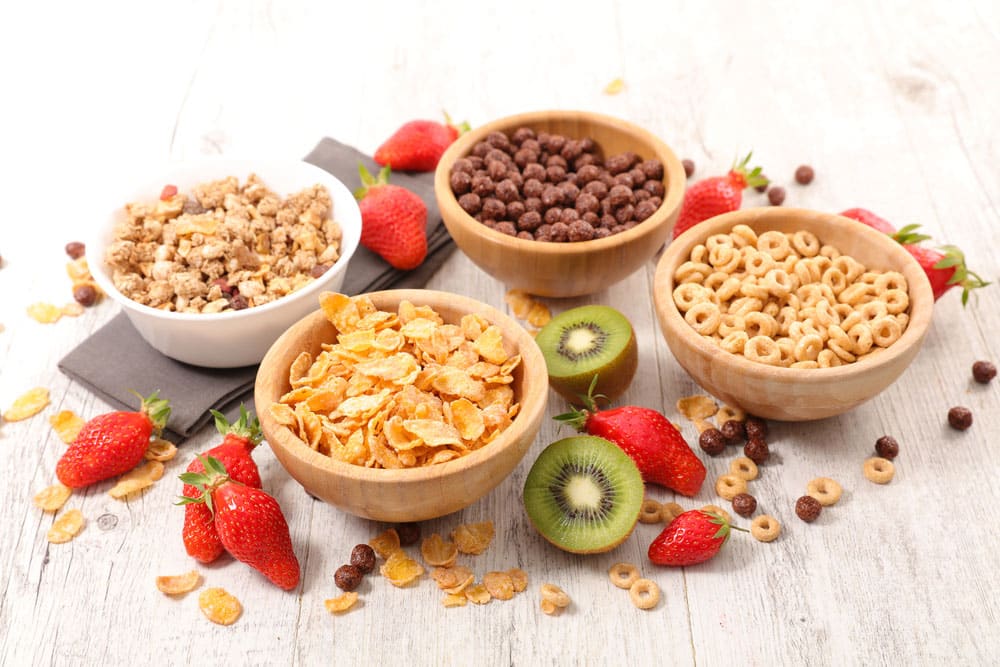
Wake up and smell the cereal! Breakfast from a box is often a go-to for those in a hurry but hold up – it may not be the healthiest choice. Yes, it’s quick, convenient, and often delicious, but did you know that many kinds of cereal are loaded with sugar and lacking in essential vitamins and minerals? Most of the so-called “healthy” brands are anything but.
Furthermore, many brands are deceptively marketed as healthy when they are far from being a nutritious choice. By looking at the ingredients, nutrition labels, and potential health risks of a diet fueled by breakfast cereal, you can make an informed decision about whether it is the right choice for you. In this article, you’ll discover disturbing facts about breakfast cereal that make them a less than healthy option for your health.
They’re Jam Packed with Sugar
Boxed cereal often contains high levels of sugar and processed ingredients, which can have negative health effects when you consume them in excess. It’s better to stick to unprocessed forms of cereal, like steel-cut oats. If you can’t give up breakfast cereal, opt for cereal with minimal added sugar, as well as natural ingredients such as whole grains and nuts.
Also, pair your cereal with other healthy items, such as low-fat milk, fruit, and nuts, to balance out the sugar content. Some studies have found that the amount of sugar in cereal can be as high or higher than in candy and dessert products. Read the label!
Breakfast Cereal Manufacturers Target Children
Many popular breakfast cereal brands are marketed specifically toward children, featuring catchy slogans, colorful packaging, and cartoon characters to attract young consumers. These brands often contain a large amount of added sugar, fat, salt, artificial colorings, and flavorings, making them highly palatable and appealing to kids but lacking in nutritional value.
Are these ultra-processed, boxed cereals contributing to childhood obesity and other health issues? You betcha!
Companies have been taking steps to reduce the number of unhealthy additives in their products, but many breakfast kinds of cereal still contain large amounts of sugar and artificial ingredients. If you’re a parent, be aware of what is in the cereals you’re buying for your kids, and consider healthier alternatives, such as oatmeal, nuts, and seeds.
The Cereal Industry Uses Deceptive Marketing Practices
The cereal industry has a long history of deceptive marketing practices, including false health claims, misleading portion sizes, and skewed nutritional information. For decades, cereal companies have claimed certain cereals are “healthy” when in fact, many of these products contain high levels of sugar, fat, and additives.
Often, the portion sizes suggested by cereal boxes are far smaller than what a person usually consumes in a single sitting, which can lead to an overconsumption of calories. Plus, nutritional information on cereal boxes can be misleading and difficult to interpret, as many companies use proprietary methods to calculate nutrient values. Therefore, consumers are often unaware of the true nutritional value of a cereal and may be consuming more than they should, including more calories and sugar.
The “Fruit” in Boxed Cereals May Be Fake
Here’s a shocker. Those cereal boxes with graphics of real blueberries on the package may be fooling you! When browsing the cereal aisle of your local grocery store, you may have noticed a variety of colorful, fruity cereals. While these cereals often promise to deliver a delicious, natural fruit flavor, the truth is far from it.
Many boxed cereals claiming to contain fruit contain largely artificial ingredients and very little real fruit. In fact, the fruit pieces in most boxed cereals are made from sugar, corn syrup, artificial colors, and other artificial flavors. They may be shaped and colored to resemble real fruit, but they are anything but.
The Cereal Industry Has a History of Price Fixing
The cereal industry has a long and storied history of price fixing and other anti-competitive practices. This has had a damaging effect on consumers by maintaining artificially high prices and limited choices in the marketplace. The effects of price fixing and other anti-competitive practices have been felt for decades and has only grown more pronounced in recent years.
This has made it difficult for consumers to find competitively priced cereals and obtain a variety of options. To combat this issue, the U.S. government has taken steps to ensure that cereal companies adhere to anti-trust regulations and are held accountable for any anti-competitive practices. This includes passing new laws, increasing enforcement of existing laws, and bringing lawsuits against companies that violate the law.
Conclusion
In conclusion, the healthiest breakfast cereal is one that isn’t processed and contains few or no added sugars. Whole-grain oats, quinoa, and barley are excellent options for a nutritious breakfast. While many breakfast cereals appear healthy, they often contain high levels of sugar or other unhealthy ingredients. It is best to look at the nutrition label and avoid cereals with added sugar, trans fat, and artificial flavors and colors. Eating a balanced and nutritious breakfast can provide the energy and nutrients needed to start the day right.
References:
- “Breakfast Cereals – Action on Sugar.” actiononsugar.org/surveys/2020/breakfast-cereals-/.
- Hrefna Palsdottir, MS. Breakfast Cereals: Healthy or Unhealthy? Healthline. Published January 30, 2023. Accessed February 8, 2023. healthline.com/nutrition/are-breakfast-cereals-healthy
- Cereal offenders: potentially harmful ingredients in “healthy” breakfast food. Environmental Working Group. Published January 3, 2022. Accessed February 8, 2023. .ewg.org/news-insights/news/2022/01/cereal-offenders-potentially-harmful-ingredients-healthy-breakfast-food#:~:text=Most%20packaged%20breakfast%20cereals%20are,heart%20disease%2C%20stroke%20and%20cancer.
Related Articles By Cathe:
Hot Cereal in the Morning – Which Options Are the Most Nutritious?
All Fiber Isn’t Equal When It Comes to Reducing Your Appetite

